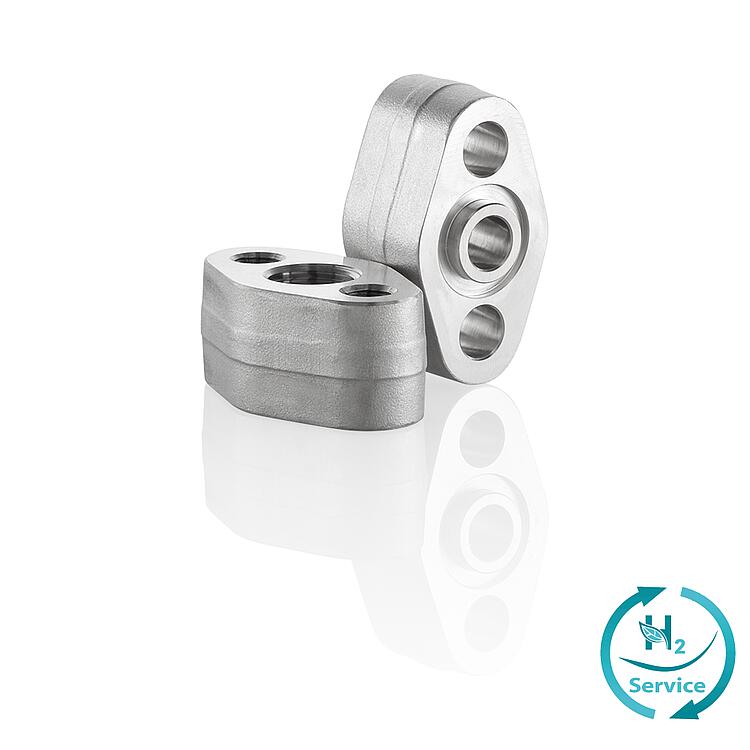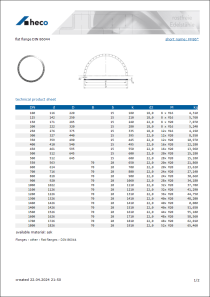
8 Bolting for PN flanges (EN1092 std): What is a PN flange?Maass Flange Corporation is a fully integrated, forging and machining manufacturer of. The pressure class for JIS flanges would be start from 2K, 5K, 10K, 16K, 20K, 30K, 40K, 63K and so on. The pressure class for DIN flanges would be start from PN6, PN10, PN16, PN25, PN40, PN63, PN100, PN160 and so on. In the USA, ANSI stopped publishing B16.5 in 1996, and the standard is ASME B16.5.
Applicable pressure in bar, at a reference temperature of 20 ☌. The numerical value written after PN specifies the flange’s Max. API classes all flanges that accept BX ring gaskets as 6BX flange.PN stands for “Pressure Nominale”. API included 15,000 PSI and 20,000 PSI flanges in additional recent editions of API Spec 6A. In 1961, Standard 6BX and Standard 6B were combined into Standard 6A, now designated Spec 6A.
- Buffalo Another designation “DN” stands for Diameter Nominale which is used with the term PN to specify the size of flange. High alloy, low temperature, high strength, high pressure, specialized dimensions, anchor flanges, adapters and reducers etc. Whenever you need specialized custom flanges i.e. Our flanges are manufactured in accordance with ASTM, ANSI, API, MSS, DIN and other engineering standards. Provides a full line of quality forged steel pressure flanges. Simply said it’s a classification system for flanges mostly used in European standards for installations in European countries.Authoritative Manufacturers, Stockists, and Suppliers of Stainless Steel Raised Face Flanges, Flat Faced Flanges, ASME B16.47/ANSI B16.5 Flanges, Plate Flanges, Series A & B Flanges, Male & Female Flanges, Forged Flanges, MSS SP-44 Flanges, DIN86029.
These are mainly used in USA but now it has become the foremost standard for flanges worldwide. American standards such as ASME B16.5, ASME B16.47, and MSS SP-44 classify flanges according to pressure classes such as 150#, 300# etc and their dimensions are in inches. If you are interested in those flanges products, please contact us as soon. Our flange designs are available as din flanges, weld neck flange, slip-on flange, lap joint flange, and etc. So a 2” (which is 2 x 25.4=50.8mm) imperial flange stated as DN50, 12″ flange as DN300 and so on.Wellgrow flanges are made by forging, steel or casting according to clients request.

BS EN 1092-2 (Cast iron flanges) for nominal pressures, see DIN EN 1092-2ISO 7005 also includes European DIN flanges PN6 / 10 / 16 / 25 / 40 which were previously DIN 2501-1 and BS4504. BS EN 1092-1 (Cast steel flanges) for nominal pressures, see DIN EN 1092-1 Part 4: Aluminium alloy flanges, PN 10 to PN 63 Part 3: Copper alloy flanges, PN 6 to PN 40 Part 2: Cast iron flanges, PN 2.5 to PN 63 Part 1: Steel flanges, PN 2.5 to PN 400
For more information on it the following sentence is copied from ISO 7005 Standard which states- ISO 7005 is based on the American and European steel flange system combined with some changes to the dimensions specified in the two system. Flanges those are from EN1092 standard will not match with corresponding ASME flanges for same pressure range.However, the PN flanges from ISO 7005 can be used in where required which is interchangeable with ASME 16.5. SAIDI_Pipes_Fittings_Flanges_eng-36Compatibility of PN/ EN1092 flanges with ASME flangeFlanges developed to ANSI, AWWA, ASA or old British specifications measured in inches will not necessarily fit with the specification of PN flanges. Types of flanges, Types of collars and Face types for flanges as per EN 1092-1 can be seen in pdf below. DIN standards for flanges (Per below pic)DIN Flanges standards Available Size and Types for PN flanges (per EN1092 std):EN1092 has PN designations from PN 2,5 to PN 400 and nominal sizes from DN 10 to DN 4000.

Bolting for PN flanges (EN1092 std):Selection of bolting, to be done as per EN 1515-4, for combination of the materials of flanges and bolting see EN 1515-2. Gasket for PN flanges (EN1092 std):Appropriate gaskets for EN1092 PN flanges are covered in EN 1514 std. Basically all common material like carbon steel, alloy steel, stainless steel and low temp carbon steel are available in European material standards.


 0 kommentar(er)
0 kommentar(er)
